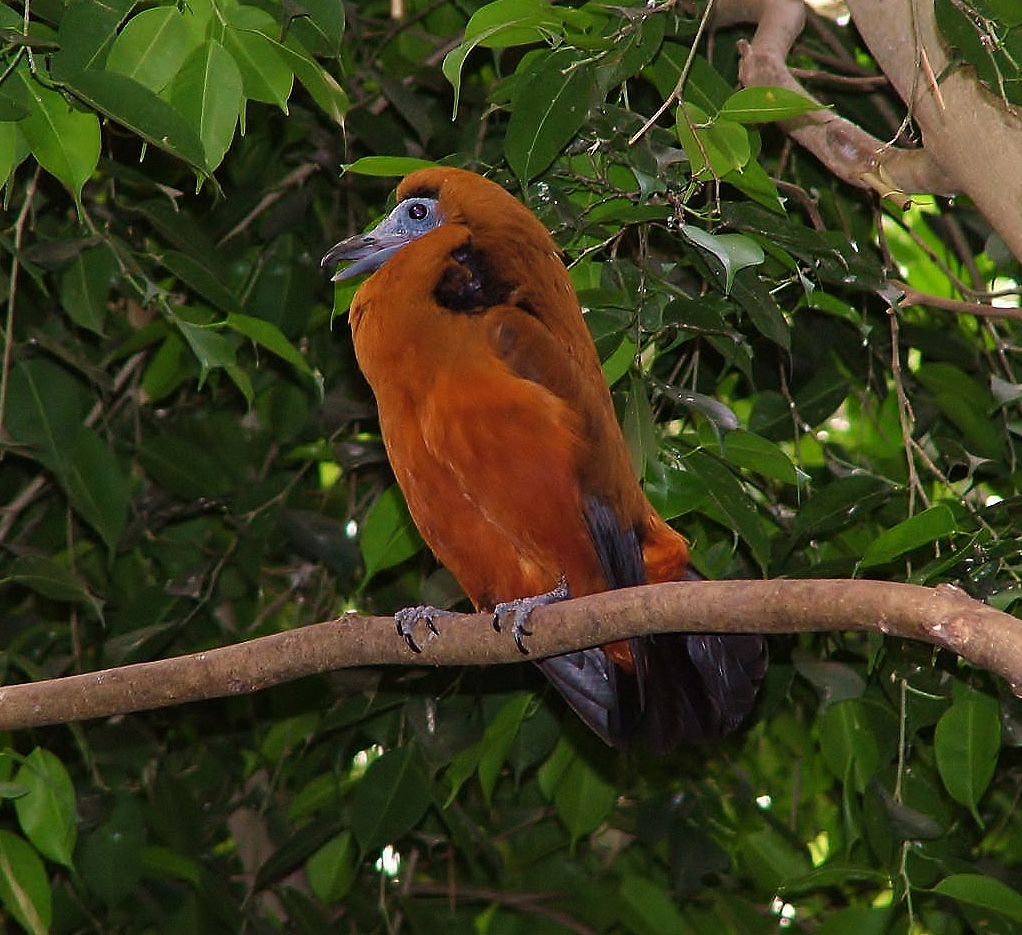 |
| (Photo from Zoo Chat) |
Common name:
capuchinbird (en); maú (pt); coracine chauve (fr); pájaro capuchino (es); kapuzinerkotinga (de)
Taxonomy:
Order Passeriformes
Family Cotingidae
Range:
This species is found in northern Brazil, north of the Amazon river, in the Guyanas, in south-eastern Venezuela and marginally across the border into Colombia.
Size:
These birds are 34,5-36 cm long. Males weigh 320-395 while the smaller females weigh 265-365 g.
Habitat:
The capuchinbird is found in the canopies of rainforests, from sea level up to an altitude of 1.400 m. Notably, in Venezuela they are found in forested slopes of tepuis.
Diet:
These birds are mainly frugivorous, eating the fruits of a number of plant species, especially
Lauraceae, Burseraceae, and Arecaceae. They also take large athropods such as grasshoppers, phasmids, caterpillars and spiders. They are known to occasionally hunt bats.
Breeding:
Capuchinbirds are polygynous. The males form a lek, where they perform a series of displays to attract females. After mating the male has no further part in the breeding process. The nest is a small cup made of twigs, placed in a fork near the end of a branch, on the forests understory 4-6 m above the ground. There she lays a single pale ground khaki colour egg with sepia and light brown blotches, which she incubates alone for 26-27 days. The chick is fed by the female alone and fledges about 27 days after hatching.
Conservation:
IUCN status – LC (Least Concern)
This species has a very large breeding range and is described as uncommon. The population trend is believed to be stable but the capuchinbird is affected by logging and models of Amazon deforestation suggest they will loose 8% of suitable habitat in the near future.







